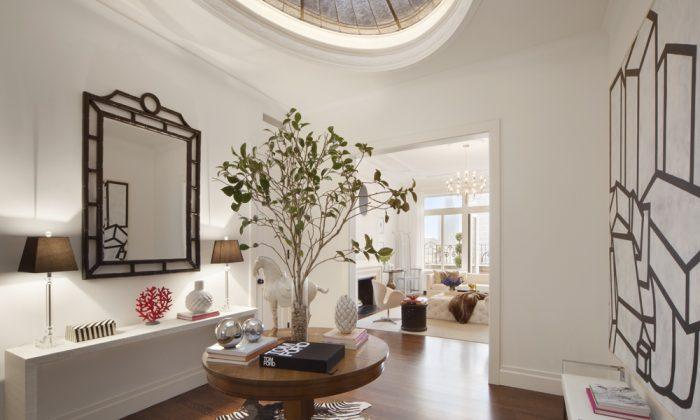NEW YORK—As towering residential developments rise one after another south of Central Park, the historic architectural treasures on 57th Street have been a bit overshadowed.
“There are many famous buildings there designed by famous architects,” said CORE real estate agent Doug Eichman. Buildings by Emery Roth and Warren & Wetmore sit on the same street as Carnegie Hall and the Crown Building where the Museum of Modern Art held its first exhibition, all just blocks from Central Park.
Eichman, who has sold real estate in the area for over a decade and has been a resident since 1992, said the energy of the neighborhood has changed over time as well, holding onto the arts and culture of the city, but adapting to new buyers’ needs.
“I think part of the appeal of 57th Street is the history and the fact that it’s one of the prettiest streets in the city that’s lined with these prewar buildings,” said Shaun Osher, CEO and co-founder of CORE. “[That] gives that street its texture.”
“It’s literally right at the center of New York City, and it [has the] proximity to the arts and culture that makes this city great,” Osher said.
Best of Both Worlds
The 57th Street corridor has gotten much attention from residential buyers from as close as the next street over, to as far away as Asia, as the new developments and the old cater to a variety of tastes. While international buyers or investors have given the luxury high-rise residences a lot of attention because they aren’t always full time residents, New Yorkers know and love the prewar buildings.
“The prewar co-ops are like joining a club, to some extent,” Eichman said.
A handful of buildings are prewar cooperatives, and then there are buildings built in the 1960s that mimic the style and layout of the prewar architecture, Eichman said.
“The demographics have changed; there are families that have been interested in the neighborhood because of the spaciousness and the layout—multiple bedrooms, large, gracious apartments,” Eichman said of the coveted co-ops. Even families with students attending private schools in the Upper East Side want to live in the area because of the generous space they can’t get elsewhere.
The addition of Whole Foods at the Time Warner Center played into the change in energy of the corridor as well, Eichman said.
Renovations can involve the full building, as well as individual units. Residences are often opened up to allow more sunlight in, but most prefer to keep the prewar details as they upgrade.
The co-op boards are very aware that buyers are seeking out more amenities and family-friendly additions, and are upgrading the interiors.
Eichman noted a co-op board president had reached out to him to better understand how to add value to the building. Now they’re considering adding amenities like a gym, a playroom, upgrading shared areas like the lobby, adding storage space, and re-evaluating the building’s plumbing to allow for washers and driers in the units.
“That’s the way they can drive share price up and they can compete dollars per square foot on a co-op, versus dollars per square foot on a condo,” Eichman said. “You can’t change the size of an apartment, but you can increase the intrinsic value by adding amenities to the building.”
The appeal of the ornate detail found in the architectural prewar buildings, even after renovations, makes the locations great for events, Eichman said. For example, a penthouse on 57th Street is perfect for a book signing.
“This is a very architectural space,” Eichman said. “We’re kicking it up a notch on the actual events that we do in the neighborhood and making people aware of what’s going on.”
Residential Rising on 57th
With rezoning allowing for new heights to be reached so close to Central Park, some of the city’s tallest buildings are now lined up on the 57th Street corridor.
TF Cornerstone’s 606 W. 57th St. residential project, designed by Miami-based Arquitectonica, is just the latest of the bunch.
The long list includes Extell Development Co.’s One57 and Macklowe Properties’ 432 Park. The Durst Organization’s pyramid on 625 W. 57th St. designed by Bjarke Ingels Group is still in progress, as is the skinny SHoP Architects-designed tower, 107 W. 57th St., by JDS Development and Property Market Group.
The sky-high towers are all nestled in the area because, as many developers have noted, the vantage point allows residents a great view of the park, the Hudson River, and the southern half of Manhattan.





